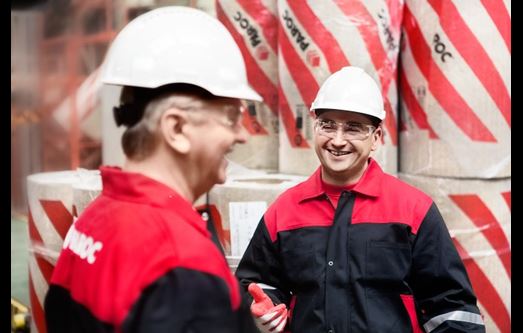Paroc, one of the leading manufacturers of energy-efficient insulation solutions in Europe, published its Sustainability Report 2015 in April. Along with the company’s approach to corporate responsibility and the innovations implemented throughout last year, the publication touches on the overall insulation market trends for Europe. What major challenges lie ahead of the manufacturers, contractors and lawmakers? How should these challenges be addressed?

Change the experience and experience a change
For Paroc, 2015 marked the beginning of a different market approach as a reaction to four megatrends that, according to the report, drive the modern construction market: These megatrends include rapid climate change, progressing urbanisation, current economic uncertainty and the customer experience as crucial factors for the manufacturers operating in the ever-competitive insulation market. "The construction industry as a whole has traditionally been slower to adapt new trends well-established in other markets", says Marja Jakola, Business Development Director at Paroc. "Customer experience and digitalisation are fine examples of how the construction brands can differentiate themselves in a highly competitive environment", Jakola continues.
Sustainability starts at home
Last year brought a new resolutions regarding EU’s energy policy. President and CEO of Paroc Group, Kari Lehtinen, sees the improvement of buildings’ energy efficiency not only as a potential, but also as duty: "2015 was turning point in the climate change discussion due to the COP21 climate change agreement in Paris. There is a need for robust climate action on a national level, and I am cautiously optimistic to believe that the COP21 agreement leads to more concrete actions such as changes in regulations. Even though energy consumption in new buildings is on a good level, there is still a lot of work to be done with the most of the existing building stock", he commented.
In 2015 Paroc continued to increase operational efficiency while decreasing its environmental footprint. The company progressed towards the goal of reducing energy consumption by 30% by 2020 in comparison to 2011 and the amount of waste to landfill, as followed by the increased amount of recycled raw materials in the processes. In 2015, Paroc’s plants cut energy consumption in megawatts/hour per ton by an average of 4,5%. This has contributed to a diminished carbon footprint, as the company substituted oil with the use of natural gas while also decreasing the use of coke in melting.
Sustainability through innovation
The best way to promote sustainable development is to continuously innovate and strive towards a better built environment. 2015 saw a number of Paroc innovations which helped to create more value from proven materials. One of them is PAROC Delign, a concept of a complete integrated facade system with user-friendly mounting and flashing system, without unwanted vertical stripes in prefabricated building’s facades allowing a horizontal line to continue over the seam.
For the first time, the report content has been defined according to Global Reporting Initiative’s G4 methodology, thus disclosing company’s most critical impacts on the environment, society and economy in a reliable and standardized way. Read more from Paroc Sustainability Report 2015.